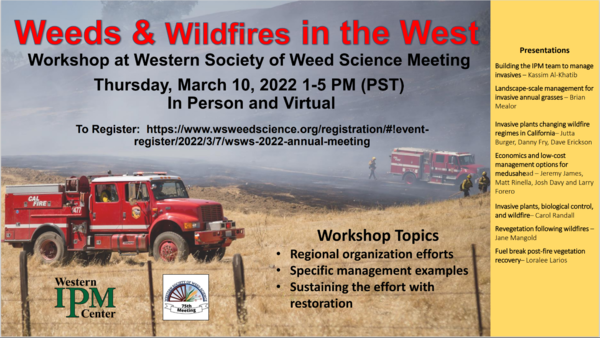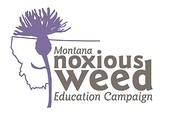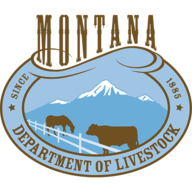
Meet the Vice-Chair of the Montana Rangeland Resources Committee!
John Hollenback – Rangeland Resource Committee Vice-Chair
Hi. My name is John Hollenback and I am Vice-Chairman of the Rangeland Resource Committee. I am a third generation rancher from Gold Creek, Montana. My Dad died at a young age and I took over the running of the ranch at 17 years old. I later purchased it from my mother. At the beginning of managing the ranch I went to the Soil Conservation Service for help and was shown how to manage my ranch and it inspired me to take care of my Range. I have been interested in Rangelands ever since. Rangeland Resources committee was formed and passed into law in 1979 by the Legislature. I was part of a group of men who were dedicated to making this happen. I was one of six ranchers appointed by Governor Tom Judge to the first Committee and have been appointed by each Governor since and still serve on the Committee.
It has been a great honor to serve with so many ranchers and agency people that are dedicated to this wonderful resource.
It is also rewarding to travel around Montana and see so many ranchers that are also interested in taking care of the resource and that we can learn from each other.
Learn more about the Rangeland Resources Committee, here!
|
 |
Montana Ag Network: Montana grasshopper outlook concerning
By: Lane Nordlund
Grasshoppers had a devastating impact on Montana’s range and farmlands in 2020 and 2021. Now, farmers, ranchers, landowners, and federal agencies are cautiously eager to see what is in store for 2022.
USDA's Fall Rangeland Grasshopper Outlook showed a slightly better outlook from 2021 for grasshopper infestations. But drought will ultimately tip the balance of the scale.
In the state of Montana, 45.8 million acres are forecasted to experience 8-15 grasshoppers per square yard and 8.6 million acres are projected to have more than 15 grasshoppers per square yard.
View the 2022 Rangeland Grasshopper Hazard map and full article here.
Reminder: 2022 Leopold Conservation Award Applications Due March 15th!

Helpful History from Good Grazing Makes Cent$
To better understand how to best manage range today, an understanding of what happened to the land in its past can make a difference. How it was historically managed could have impacted the ground in a way which changed its potential- thus changing the expectations today. As the land has evolved, so has the understanding of rangeland science and management, so common practices from decades past may be the very ones discouraged today and now limiting the lands' potential. Therefore, what can be anticipated on a given ecological site may depend largely on what was done to it in the past.
Read more of why the land's history matters, here!
|
Watch the Final 'Working Lands, Working Communities' Workshop in Boise, ID
Idaho Governor, Brad Little, completed the final workshop for his WGA Chair Initiative, 'Working Lands, Working Communities' with a two day (Feb. 23-24) recorded conference.
The workshop sought to answer questions with roundtable discussions on natural infrastructure, invasive species management, sustainable rangeland markets, and forest management infrastructure. And further expanded with roundtables on Optimizing Good Neighbor Authority Implementation, Rangeland Fire Protection Associations, Integrating Local Input into Planning Processes and The Future of Working Lands, Working Communities.
You can view all workshop sessions from by clicking on the links below.
Blackfoot Challenge Uses Evolving Tech to Reduce Grizzly Bear Conflicts
The Blackfoot Challenge has been testing and developing electrified drive-over mats in collaboration with ranchers and partnership agencies to reduce potential conflicts with grizzly bears.
Above is a short video showcasing the evolving technology, take a look!

Noxious Weed Views and Behaviors after 25 Years of Education & Outreach
Increasing the general public’s knowledge of noxious weeds is believed to be an important element of successful management, and many resources have been dedicated to this end. However, measuring the impact of noxious weed education and outreach efforts is limited. The goal of this study was to evaluate noxious weed views and behaviors of Montanans after 20+ years of education and outreach.
Read the full article, here!
|
 Internationally known speaker brings tools to navigate transitions and transfers for farm and ranch families to Malta and Glasgow events in March.
Event registration and more information can be found, here!

DOL Reports Brucellosis Affected Hered in Gallatin County
CONTACT:
Dr. Tahnee Szymanski, MT Dept. of Livestock, (406) 444-5214, tszymanski@mt.gov
Dr. Marty Zaluski, MT Dept. of Livestock, (406) 444-2043, mzaluski@mt.gov
Helena, Mont. – On Tuesday, February 22ⁿᵈ, the Montana Department of Livestock (DOL) announced that an animal from a Gallatin County ranch within Montana’s Designated Surveillance Area (DSA) was confirmed infected with brucellosis.
This is the 12th brucellosis affected herd found since the creation of the DSA in 2010. The Department previously reported an affected herd in Madison County in January 2022.
Read the News Release, here.
|

Sage Grouse Program Announces $5.2 Million Available for Conservation Project Grants
The Montana Sage Grouse Oversight Team (MSGOT) has announced that approximately $5.2 million in grant dollars are available for conservation projects to benefit the sage grouse and its habitat.
Applicants are required to submit an online pre-proposal review no later than 5:00 p.m. on May 30, 2022, to qualify for full proposal submission. The pre-proposal review provides would-be applicants with feedback that may help them decided whether to submit a complete application for formal consideration. Completed applications must be submitted no later than 5:00 p.m. on August 12, 2022.
Potential projects could include options such as the reduction of conifer encroachment; restoration or improvement of sagebrush health; restoration of cropland to grazing land; or term conservation leases with a 15-year minimum duration.
MSGOT will select grant recipients during a public meeting later this fall.
Interested parties may schedule a meeting with MSGOT staff to review the pre-proposal
feedback. Requests for pre-proposal reviews should be submitted to thartman@mt.gov.
Learn more about the grant program, here!

Interior Department Releases Blueprints for Implementing Bipartisan Infrastructure Law
WASHINGTON- Several bureaus across the Department of the Interior submitted to Congress their fiscal year 2022 blueprints for implementing President Biden’s Bipartisan Infrastructure Law this week. The spend plans outline how the Interior Department and bureaus will stand up new programs and expand existing work to deliver results by building resilience to the devastating effects of drought and wildfires, putting Americans to work to clean up legacy pollution, strengthening Tribal water infrastructure and climate resilience, and identifying domestic supplies of mineral resources needed to advance new technologies.
Programs authorized and appropriated by the Infrastructure Law, and outlined in the bureau spend plans:
- Water and Drought Resilience
- Wildfire Resilience
- Ecosystem Restoration and Resilience
- Tribal Climate Resilience and Infrastructure
- Legacy Pollution Clean-Up
- Indian Water Rights Settlements
View the full article, here!

Custer Gallatin National Forest Land Management Plan Available
The Custer Gallatin Land Management Plan sets priorities for investments that support work with state partners, Tribes, communities, and stakeholders to achieve wildlife conservation, vegetation and active landscape management, and help maintain sustainable mining, grazing, forest products and recreation industries. The Custer Gallatin land management plan provides the framework for how valued landscapes will be managed for about the next 15 years.
The plan allocations include:
- 8 Recommended Wilderness Areas,
- 13 Backcountry Areas,
- 2 Key Linkage Areas,
- 30 Wild & Scenic Rivers,
- 10 Recreation Emphasis Areas &
- 1 Globally recognized Platinum & Palladium Mine.
For more information, please visit the Forest Service website.
Muddy Waters: Reducing post-fire erosion in an intensifying fire environment
Jessica Brewen- Rocky Mountain Research Station
FEB 22, 2022- As wildfires increase in size, so does the potential for erosion – especially on landscapes that experience intense wildfires. Erosion increases sediment and wildfire ash in rivers and streams and can put people, property and water supplies at risk.
Pete Robichaud, a research engineer with the Rocky Mountain Research Station, and his team are looking at land management practices designed to mitigate erosion after severe fire events. They’re studying what happened on large fires in the past and are using that knowledge to build predictive models that demonstrate how well the erosion reducing techniques perform over time.
Read more, here!

Five Facts About the United States Drought Monitor
By: Ciji Taylor, USDA, in cooperation with the National Drought Mitigation Center
- Numerous agencies use the Drought Monitor to inform drought-related decisions.
- U.S. Drought Monitor is made with more than precipitation data.
- A real person, using real data, updates the map.
- The Drought Monitor provides a current snapshot, not a forecast.
- Your input can be part of the drought-monitoring process.
Read the full article, here!
USDA to Invest up to $225 Million in Partner-Driven Conservation on Agricultural and Forest Land
NRCS recently announced another opportunity to apply for the Regional Conservation Partnership Project (RCPP). The deadline for submitting a proposal is April 13th, 2022.
Please see the announcement for all the details.
Note that this announcement is soliciting projects for both RCPP Classic and the Alternative Funding Arrangements.

CSU Drought Webinar Series
Colorado State University Extension hosted a four part drought webinar series, including topics on :
- Using Forecasts in Drought Planning
- Risk Management
- Livestock and Ranch Drought Management
- Crops Drought Management (Will be held March 4th)
Interested in these topics? Listen here!
|
Montana University System Water Center:
Evaluating Irrigation Efficiency: Toward A Sustainable Water Future For Montana
MSU Extension:
Updated MontGuides
University of Montana:
Rangeland Analysis Platform
USDA-Agricultural Research Service
Rangeland Resources & Systems Research
March 2022:
April 2022:
Stacey Barta, State Coordinator for Rangelands
220 W. Lamme, Suite 1A
Bozeman, MT 59715
(406) 594-8481
SBarta@mt.gov
Emily Moran, Administrative Assistant for Rangelands
PO Box 201601
Helena, MT 59601
(406) 444-2613
Emoran@mt.gov
Rangeland Resources Committee:
Diane Ahlgren, Chair
John Hollenback, Vice Chair
Sigurd Jensen
Jim Anderson
Leah Lewis
Ron Devlin
|